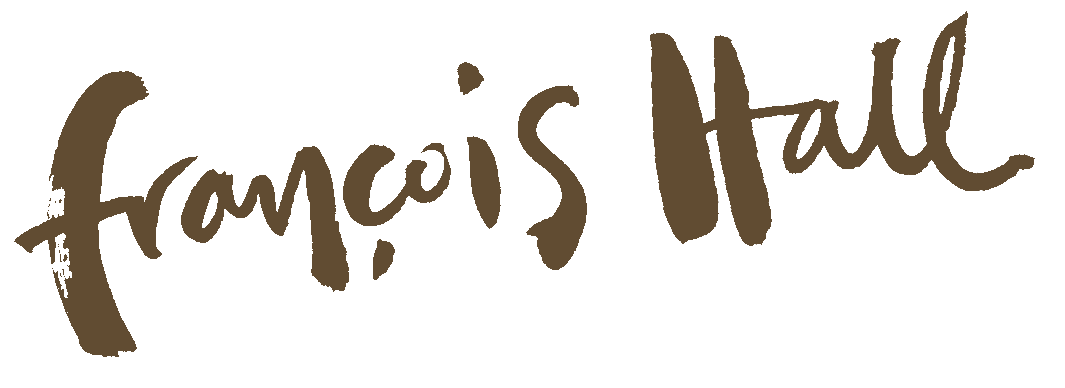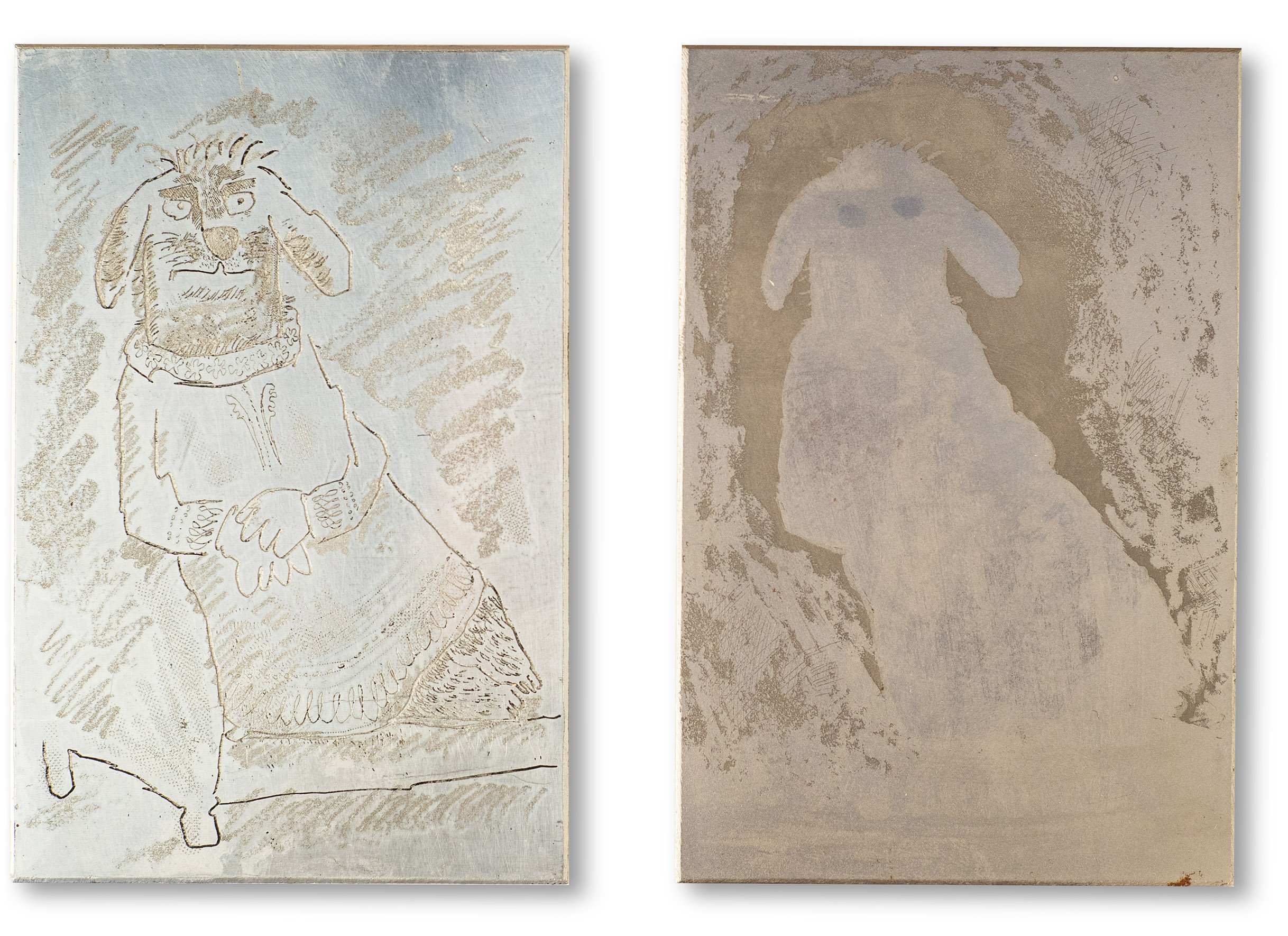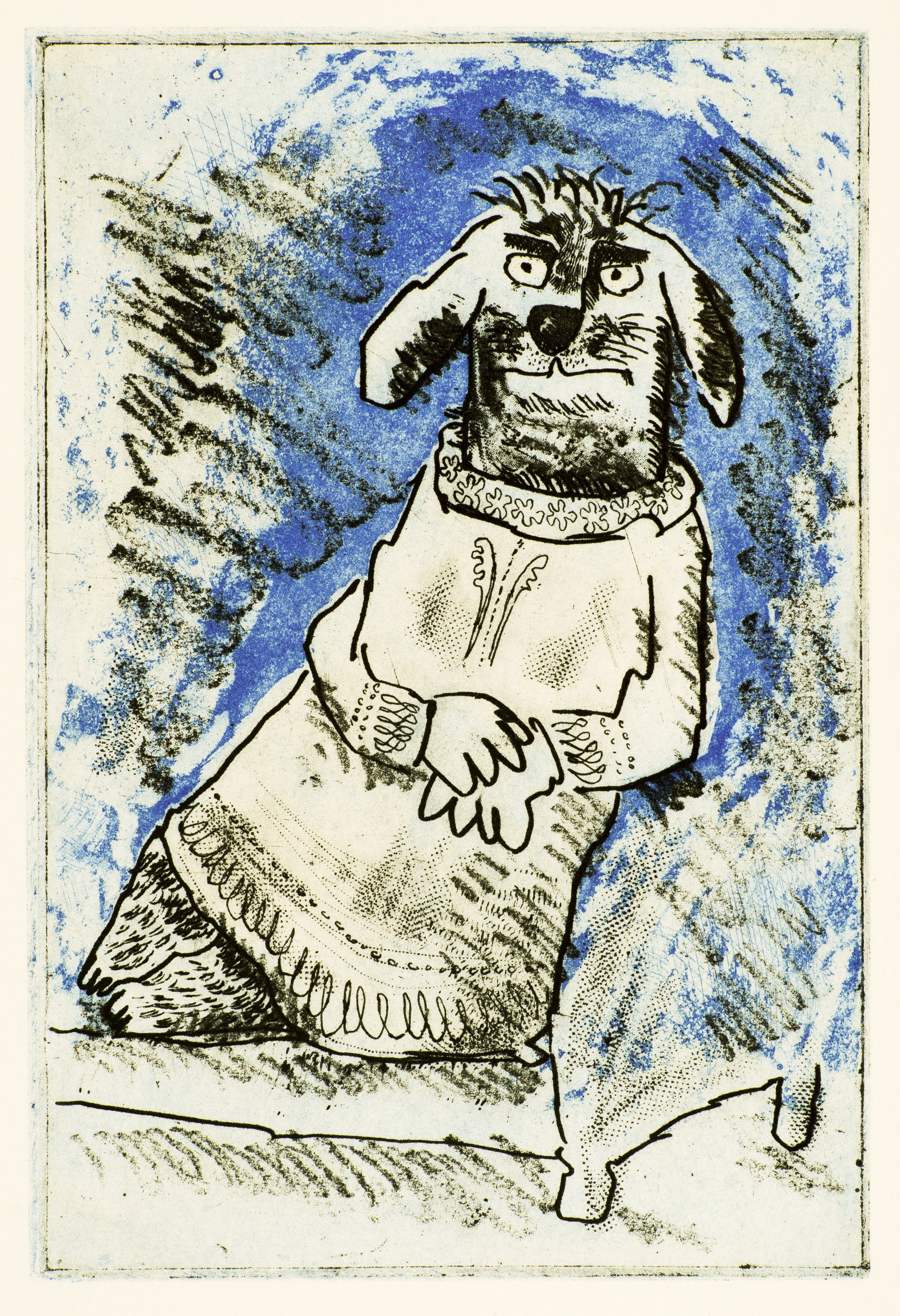Intaglio Printing
With the intaglio printmaking process, the lines and textures of the design to be printed are engraved, cut or bitten into the plate. The direct opposite of relief printing where the image to be printed stands proud of the matrix. Where the surface areas of the plate remain untouched, they print blank or white (although this can be manipulated later when inking the plate during the printing stage). A plate can be made from a number of different materials including steel, copper, zinc, aluminium, and more recently plastic. In comparison to Drypoint and engraving, where the design is manually incised into a soft metal such as copper using a sharp tool, in etching you are able to draw freely into the ground, almost as if using a pencil. Etching relies on a layer of ground resist that covers the metal surface to protect it from acid. Various needles, scrapers and roulettes are used to break into this ground, exposing the bare metal. When this is placed into an acid bath, only the marks made with these tools are etched.
For me, etching is truly experimental, and there are many techniques you can combine together to create a complex textural image. Etching offers a vast amount of freedom and spontaniety, with fine delicate lines, roulette textures and fat crayon scribbles. The sugar lift technique gives loose brush marks painted directly onto the metal as you would on paper. Aquatint tones can be delicate and light or deep and heavy, open bite can be dark and textural
Once the plate is ready to print, inking the plate is another layer of experimentation. Ink is forced into the etched grooves and generally across the plate, into the grain of the aquatint if used. The excess ink is then carefully wiped off the plate surface, but you can decide how much ink to be wiped off, leaving a plate tone where appropriate.
Printing the plate requires considerable pressure under felt blankets. Paper is dampened to make it soft and pliable, and then laid over the inked plate. The blankets, paper and plate are passed through the press and with the help of the felt blankets, the heavy pressure pushes the paper into the inked grooves. As a consequence of this process, printed intaglio images are ever so slightly raised, embossed to the touch giving it a lovely textural quality.



